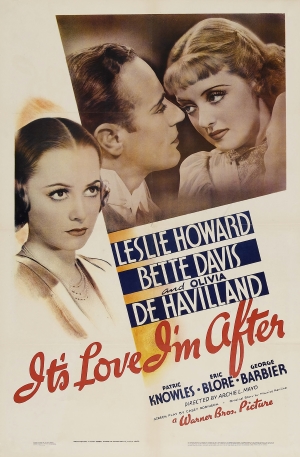A Rootin-Tootin Good Time!
***This Review Contains Spoilers***
A Texas cattle agent witnesses the brutal lawlessness of Dodge City, Kansas and agrees to take up the job of sheriff to clean the town up. If that doesn’t sound like the most stereotypical summary of a western then I don’t know what does. 1939 was the year in which the western went from a B-movie genre to getting the big studio treatment almost overnight and as a result, the inclusion of just about every western trope in Dodge City almost feels slightly comical. We get a train, a stagecoach, cattle drives, a saloon brawl, dancehall girls, an evil gang terrorising the locals, the “new sheriff” in town, a schoolmarm, lynch mobs, a crusading newspaperman, poker games, herds of bison, a climactic shootout, rock and roller, cola wars, I can’t take it anymore! Perhaps the only elements which are missing are a fight with Indians and big ol’ saguaro cactus (geographically inaccurate I know)

Errol Flynn transitions well to the role of a cowboy as Irishman Wade Hatton (“Thirty years ago, my father met my mother at the Londonderry fair” – excuse me, no true Irishman calls it Londonderry). Dodge City was the 5th of eight pairings of Flynn and Olivia deHavilland in which she plays feisty frontierswoman Abbie Irving. The magic is still there with any scene in which they are alone – you can tell these two really are in love, and like in The Adventures of Robin Hood, deHavilland is given many a memorable, brightly colored costume change throughout the film. Abbie’s brother Lee (William Lundigan) on the other hand is one of the biggest twats in screen history. A spoiled, trouble-making, tantrum-throwing drunkard who carelessly fires his gun into the air which causes a cattle stampede that leads to his untimely death. However, I don’t quite get why Abbie resents Wade for his involvement in Lee’s death as he ultimately got what was coming to him. None the less, Henry Travers perfectly sums up the situation – “Women’s logic and emotions are often very confusing”.

Dodge City is a story of morality and civilization – another chapter in how the west was won. The bad guys of Dodge City lead by Jeff Surrett (Bruce Cabot) are essentially gangsters, murdering for business interests, running gambling clubs and threatening the press. However, once Wade becomes the sheriff and begins cleaning up the town of its crime and degeneracy, my libertarian alarm bells start going off as he restricts gambling, gun rights (is he violating the 2nd Amendment by decreeing “No firearms permitted north of Front Street”?) and introduces taxes (at least his barber recognizes they are a necessary evil).

Dodge City may have the best bar fight ever committed to screen. One spurred on by post-civil war tensions as the Confederate half of the saloon sings (I Wish I Was in) Dixie’s Land and the Yankee half retaliates with Marching Through Georgia before dozens of men cause utter fist-fighting destruction, destroying ever corner of the saloon and even falling through walls and multiple floors as they pummel each other. The beginning of the scene in similar to that from Casablanca (which Curtiz would also direct) in which the Germans at Rick’s Place start singing Die Wacht am Rheinin in front of the French of whom retaliate by singing the La Marseillaise.

The film’s score by Max Steiner sounds awfully similar in parts to that which Steiner would compose for Gone With The Wind, released 8 months after Dodge City. Even some of the shots present in the film are reminiscent of the scenes in Atlanta from GWTW. From the beautiful artwork in the title screens to the grand 3-strip Technicolor encompassing many scenic horizons, Dodge City is a visual delight (it’s just a shame the DVD copy of the film suffers from some colour bleeding). The film’s climactic shootout on the train, however, lets the film done slightly as the cuts back forth between the location and a studio set fail to convincing match each other.

Errol Flynn and Alan Hale once again make a great duo and Hale even receives his own comedic spotlight moment when he wanders into a temperance union known as the Pure Prairie League, only to find he’s the only man among a group of older women. Likewise in an interesting twist to convention, it’s Alan Hale and not Errol Flynn who takes out the film’s main villain played by Bruce Cabot. I’m just disappointed Ann Sheridan’s part in the film is barely beyond a cameo despite being third billed. She performs several songs as a saloon singer but has no impact on the plot – did she have any deleted scenes? I could also do without that cutesy little kid (Bobs Watson), although to be fair at least he has a major role in the progression of the plot. Regardless of any minor shortcomings, any film is worth it when it has earned its right to culminate in the most endearing of cinematic images, the hero riding off into the sunset.








